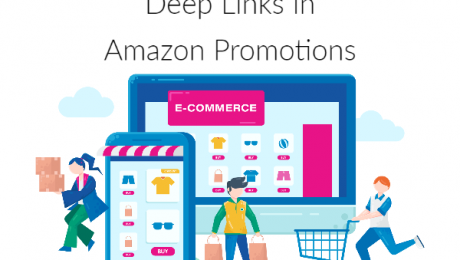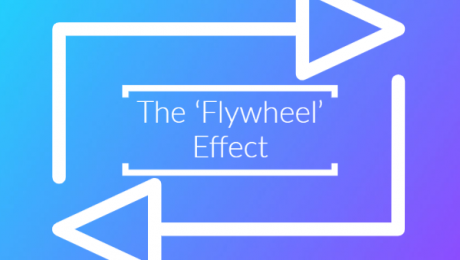Prosper Show Recap – An AI’s Perspective
As one of the largest e-commerce conferences in the United States, the Prosper Show is an annual event that brings together sellers, vendors, and service providers to discuss the latest trends, strategies, and best practices in the e-commerce industry. The 2023 Prosper Show, held from March 13-15 in Las Vegas, was no exception, featuring a wide range of informative sessions, expert speakers, and networking opportunities. In this blog, we will discuss some of the highlights of the 2023 Prosper Show.
Keynote Speakers
One of the highlights of the 2023 Prosper Show was the impressive lineup of keynote speakers who shared their insights and experiences with the attendees. The speakers included industry leaders, successful sellers, and experts in various e-commerce fields. They covered a wide range of topics, from marketing strategies to supply chain management, and provided valuable advice and inspiration to attendees.
Exhibition Hall
The exhibition hall at the 2023 Prosper Show was a bustling marketplace, featuring over 200 exhibitors showcasing their products and services. Attendees had the opportunity to meet with vendors and service providers, see demos of new products, and learn about the latest technologies and innovations in the e-commerce industry. The exhibition hall was a great place to network, make connections, and learn about new opportunities for growth and expansion.
Educational Sessions
The educational sessions at the 2023 Prosper Show covered a wide range of topics relevant to e-commerce sellers and vendors. The sessions were led by experts in their respective fields and provided attendees with practical tips, insights, and strategies for improving their businesses. The sessions covered topics such as online marketing, product sourcing, supply chain management, and customer service. The educational sessions were well-attended and provided attendees with valuable information that they could apply to their businesses.
Networking Opportunities
Another highlight of the 2023 Prosper Show was the many networking opportunities available to attendees. The conference provided ample opportunities for attendees to meet and connect with other e-commerce professionals, vendors, and service providers. The networking events included cocktail parties, happy hours, and other social events, providing attendees with a chance to relax, unwind, and make valuable connections.
In conclusion, the 2023 Prosper Show was an excellent opportunity for e-commerce professionals to learn, network, and grow their businesses. With its impressive lineup of speakers, informative sessions, and networking opportunities, the conference provided attendees with valuable insights and strategies for success in the ever-evolving world of e-commerce. We look forward to seeing what the Prosper Show has in store for next year’s conference.
P.S. This was complements of ChatGPT to show the value of using AI in today’s ecommerce industry and the efficiencies that can be realized.
- Published in Conferences
Amazon EC Summit 2021
In October 2021, Amazon held the largest EC event, “Amazon EC Summit,” in Tokyo to recognize 22 “high quality” sellers and distributors from 6 categories as providing a better shopping experience through Amazon.co.jp’s marketplace.
Any Seller will tell you, selling on Amazon successfully is a challenge in any category. From competition that’s constantly raising the bar and reinventing products to inventory issues caused by an ever-changing global landscape. Amazon continually raises the bar, pushing sellers to provide a better shopping experience. However, in 2020 and 2021, with the introduction of COVID, selling on Amazon took on a whole new level of complexities. COVID not only caused issues for sellers and their supply chains. It also caused problems for Amazon at fulfillment centers that challenged everyone to keep inventory in place and get shipments to customers on time. In addition to these challenges, consumers stuck at home for months faced new challenges setting up home offices and adjusting to life in quarantine. These adjustments pushed sales on Amazon to new heights in many areas.
Amazon continues to recognize and award sellers who provide the best possible shopping experience to their customers. At Prime Guidance, we understand Amazon is constantly changing and innovating. To keep our clients on top in these markets, we continuously look at events like these to see where Amazon recognizes excellence.

This year, Amazon awarded sellers/distributors who excelled in several areas of the logistic chain, from branding to overseas sales, to name a few.
“We are delighted to introduce 22 distributors offering a better shopping experience to our customers through the Amazon.co.jp Seller Award 2021. High quality to distributors. To sell products effectively, Amazon provides various logistics operations, branding, overseas sales, etc. Amazon will continue to offer to small and medium-sized businesses and other distributors. We will endeavor to provide highly convenient services that can be utilized.” – Kazuho Rouk, Amazon JP Business Headquarters
Casualbox (Marsh Co., LTD.) specializes in trendy, practical, high-quality hats and headbands hand-made in Osaka, Japan. Satoshi Numa started 20 years ago, creating hats with a new cultural mix between East and Western design. With success, he realized the only way to get his designs to the world was to go online.
“I am surprised and very honored to receive such an award. Our company, which sells casual headwear such as hair bands and beanies, has focused on overseas business for several years. Cultures are different between Japan and the global market. For this reason, it was a trial-and-error process every day for sales, but I am glad that it bears fruit in this way. We will continue to deliver excellent products to customers around the world who enjoy shopping at Amazon.” – Satoshi Numa
Prime Guidance was excited to see Casualbox, a long-time client, receive the Overseas Sales Award. Any Amazon seller will tell you, selling in multiple markets is challenging. But selling in the US, Canada, Mexico, all of Europe, Australia, and Japan and receiving an award from Amazon for these efforts is quite an achievement. Casualbox has been expanding into new markets aggressively for the last 2-3 years with great success.
“Jeroen Verschoor and Katherine Oyakawa at Casualbox are truly exceptional at what they do. They work efficiently and know how to focus efforts to have the most impact on the Amazon Marketplaces.” – Wes Beckwith, Sr. Consultant at Prime Guidance
If you are a current seller on Amazon or looking to expand into the Amazon marketplace, Prime Guidance can also empower your company to succeed. Prime Guidance Advisors help sellers navigate the challenges of e-commerce on multiple marketplaces, including selecting the right strategy, optimizing content for faster growth, improving operations to meet your marketplace requirements, and leveraging technologies to improve visibility and profitability.
For more information about Amazon’s EC Summit, visit Amazon Newsroom (http://amazon-press.jp) and About Amazon (http://www.aboutamazon.jp). For more information on this release: https://prtimes.jp/main/html/rd/p/000001368.000004612.html
- Published in Conferences
Deep Links In Amazon Promotions
Deep Links, in the context of this article, are links that direct a user into an app instead of a webpage. For Amazon, a simple use case is when you are running external traffic. Instead of a person having their web browser open and having to log in, it opens their Amazon Shopping app where all they need to do is check out.
Some of our consultants have used a tool called URL GENIUS to accomplish this. The applications go beyond Amazon. URL GENIUS, for example, can link into other popular apps such as Spotify, Facebook, Tik Tok etc.


Deep links are something that every marketer should know how to use. As the number of mobile users now soar over desktop, we must adapt to the phone display now. When someone clicks on a link they are sent to the URL. Pretty obvious right? Well, if you are selling on Amazon, Walmart, or any other major platform like Amazon and send someone a link, then it will open in the internet browser, not the app.
Why does this matter?
The answer is that everyone that uses a phone loves apps, not websites. When you send them a link, they are not logged in their browser. This means that if you send them a link, they will need to login and authenticate their browser which creates a lot of unnecessary steps for the customer.
That’s where deep links come in to play.
Now you send them a link that will open in the app natively where they will already be logged in to purchase your product without any added steps!
Contact Prime Guidance for a free analysis of your business and learn how we can help!
Author | Sprigley Allen, Senior Consultant
- Published in Other
Content Is King
Some may argue that advertising is king and that ultimately the right pay per click (PPC) strategy is the most critical aspect to a product’s success on Amazon but in truth CONVERSION is king! Without conversion, you aren’t making money. However, in reality, it’s the content that leads to conversion. Yes, you can say that without PPC advertising the consumer will never see your product. However, let’s say you have the best PPC strategy money can buy yet the consumer’s first impression of your product’s detail page is poor… will you convert?
In the early days of Amazon, it was often shoot from the hip when coming up with content. Usually, companies had fancy names for their products that often didn’t tell the consumer what the product did, nor why they should buy it. The consumer had to know exactly what they were looking for to find it, whereas in a brick and mortar store you could walk to the specific department and easily find the item. The product name wasn’t important when it comes to finding it in the store. Flash forward to the time when organic searches were (and still are) very critical… that’s when keyword stuffing began. For a battery pack you saw product titles like this:
External Battery Pack For iPhone, Samsung, Panasonic, Sony, Zenith, RCA, to Charge Grandma’s, Grandpa’s, Kids, Children’s, Aunt’s Uncle’s, Father’s Mother’s Phone, Very Small, Very Very Tiny Battery Pack
The whole idea was to try and capture every word a consumer might use to find the item but also adding somewhat irrelevant words that might bring an unsuspecting person to the page as well. Amazon soon learned that many consumers were experiencing poor search results and landing on products that had nothing to do with their search, which in turn, led to bad customer experience. When you read the first Amazon Leadership Principle – Customer Obsession, you understand that Amazon’s first loyalty is to their customer which means providing the ultimate experience on the site and delivering accurate search results. Many sellers believe that the search algorithm works best when many different words are placed in your product title, bullet points, or product description to bring consumers to your page. However, if there is no conversion, then your organic rank goes down. This, in turn, puts you further back when the next person searches for your product. They want the customer to find exactly what they are looking for, so you need to choose the words on your Detail Page carefully!
Consumers look at two things on the Detail Page:
- Content
- Images
- Bullet Points
- Product Description/Enhanced Brand Content
- Rating aka Reviews (to be discussed in a future blog post)
Images
When it comes to images, your first spot or “Main Image” is truly just an image. At minimum should adhere to Amazon’s requirements but should be as high a resolution as possible, especially if there are fine details that you want the consumer to see. The next few images should really be called an “Infographic” and you must decide what is most important for the consumer to see and understand. Let’s use a 5-inch screw with 3-inch threads as an example. The infographic would show the screw with lines at the top and bottom of the screw indicating 5” and then a second set of lines from the bottom of the screw to the top of the threads indicating 3”.
This quickly shows the consumer everything they need to know about the dimensions of the screw and whether it will work for their intended use. It’s direct and straight to the point which is perfect for this type of item. But what if you are selling a credit card-sized external laptop battery pack that will charge the laptop at least 100 times? Wouldn’t an image with a laptop, a credit card, the battery charger, and a very large 100X have more impact than lines showing 2” x 3” lines? It gives a size perspective to the consumer, which is a very powerful statement!
Lifestyle images are great too if they are relevant first to the actual product and then secondly to the brand. Having a lifestyle image of a fishing lure with heat-seeking technology will intrigue a consumer and they will want to read more. Imagine what an image that conveys the lure tracking down a fish on its own would do for your conversion. You can even combine a lifestyle and infographic image if you don’t overload it with too much written information. It’s also important to ensure text is large enough to be easily readable on mobile phones without requiring shoppers to zoom in.
Bullet Points:
In the olden days, bullet points were typically simple feature benefit statements. However, consumers demand more and we have very limited space to give them what they want. We as merchants don’t need to tell them that their life will be easier with this widget or they will look like a million bucks wearing that thing-a-ma-jig. The key is knowing what is important for each product’s consumer and speaking to them.
- 21 GIGAWATT DIGITAL VACUUM MOTOR: The super-strong motor sucks up every spec of dust and every bowling ball from you living room floor, giving you the confidence of a perfectly clean carpet.
Or…
- HEAT SEAKING SENSORS: Embedded sensors and a micro-motor guide the fishing lure right to the fish, guaranteeing a catch on every cast.
These bullet points give the feature and then explains how the feature provides the benefit.
The buyer of a high-end laptop computer probably doesn’t need to know the benefit of a 42-terabyte hard-drive or having 256-gigabytes of RAM. In an example like this, the bullet points should contain a lot more of the features and less on the benefits. Many times a consumer buying an item like this is using the features in the search which means the bullet points and even the title (discussed below) should lean more towards the features.
Other products may require more of a focus on the benefits, with less of an emphasis on the features. Again, it depends on what is important for your customer’s purchasing decision.
Product Title
Although Amazon doesn’t tell us how their organic search algorithm works, the currently accepted hierarchy is that it begins with the Product Title and then moves to the bullet points. Product titles have character limitations that are different by category and it is still important to only use relevant words that are not repetitive and will eventually index making it easier for customers to find. Using the word, “Children in Children’s Sock” is important, but don’t use “Children’s Kids Socks”. The phrase “Kid’s Socks” can go into a bullet point where it will look more natural than “Children’s Kids Sock”. Giving key features in as very few words as possible is perfect and here is a good example.
BRAND NAME 26800 Portable Charger, 26800mAh External Battery with Dual Input Port and Double-Speed Recharging, 3 USB Ports for iPhone, iPad, Samsung Galaxy, Android and Other Smart Devices
The last thing to remember is that you can only make a first impression one time and bad grammar due to keyword stuffing is a bad first impression. I have very high standards when shopping online and assume that if the grammar is bad on the detail page then the product or product instructions must be equally as poor. Most of the time I am abandoning that page… How many others are doing the same?
Contact Prime Guidance for a free analysis of your business and learn how we can help!
Author | Robert Baron, Senior Consultant
- Published in Other
The Marketplace ‘Flywheel Effect’
On Google, organic search rankings are based on content, user engagement, inbound linking, technical SEO, etc., not paid search. On Amazon and other marketplaces there is a direct correlation between paid search advertising and organic search results—known as the Flywheel Effect.
How Important Are Marketplaces?
- Marketplaces continue to increase share of U.S. sales at double-digit rates, and are where most consumers start their product research
- Though Amazon owns 50% of U.S. e-Commerce sales, Walmart.com sales are growing more rapidly than Amazon’s, and reaches 100 million consumers
Financial Planning
The first mistake brands often make is not conducting financial planning before launching on a marketplace. You need to determine a realistic annual sales budget, need financial planning to make sure you can be profitable, and don’t need to be selling on a marketplace to do financial planning.
Marketplace Launches and the Flywheel Effect
Due to the importance of the Flywheel Effect, it’s often best to start with one marketplace and get optimized. Another school of thought is to use a feed provider, test marketplaces at the same time, identify the opportunities and then prioritize. For example, Wal-Mart is large, growing faster than Amazon in many categories, and is less competitive.
A “Catch 22,” to get good organic rank on Amazon you need to have sales, however, to have sales you need good organic rank. Enter the Flywheel Effect. You need to budget enough money to generate almost all of your sales with paid advertising for the first few months.
Multi-channel Marketplace Sales
There are similarities across marketplaces. There are also differences. Following are only a few examples. Working with a feed provider can make it more efficient to manage.
- On eBay, sellers have been able to take advantage of cost per sale advertising, where the seller doesn’t pay unless a sale is made
- Walmart.com has had more limited CPC advertising targeting and bidding but is rapidly evolving their platform
- Amazon’s FBA fulfillment is unique, though both Amazon and Walmart.com have expedited shipping options, which influence organic rank and sales conversion
We hope you’re better informed about the marketplace Flywheel Effect, and what it could mean to your brand.
Contact Prime Guidance for a free analysis of your business and learn how we can help!
Author | Paul Becker, Senior Consultant
- Published in Other
- 1
- 2





